Key takeaways
- Project-based learning transforms classrooms by fostering inquiry, collaboration, and real-world engagement, encouraging students to become active participants in their education.
- Integrating activism into projects empowers students to recognize their voices as tools for change, enhancing the relevance and impact of their learning experiences.
- Reflection on project outcomes is crucial for understanding student growth and improving future projects, highlighting the importance of adapting approaches based on feedback and challenges encountered.
- Maintaining momentum in project-based learning involves regular check-ins, embracing failures as learning opportunities, and leveraging community resources to enhance student engagement.
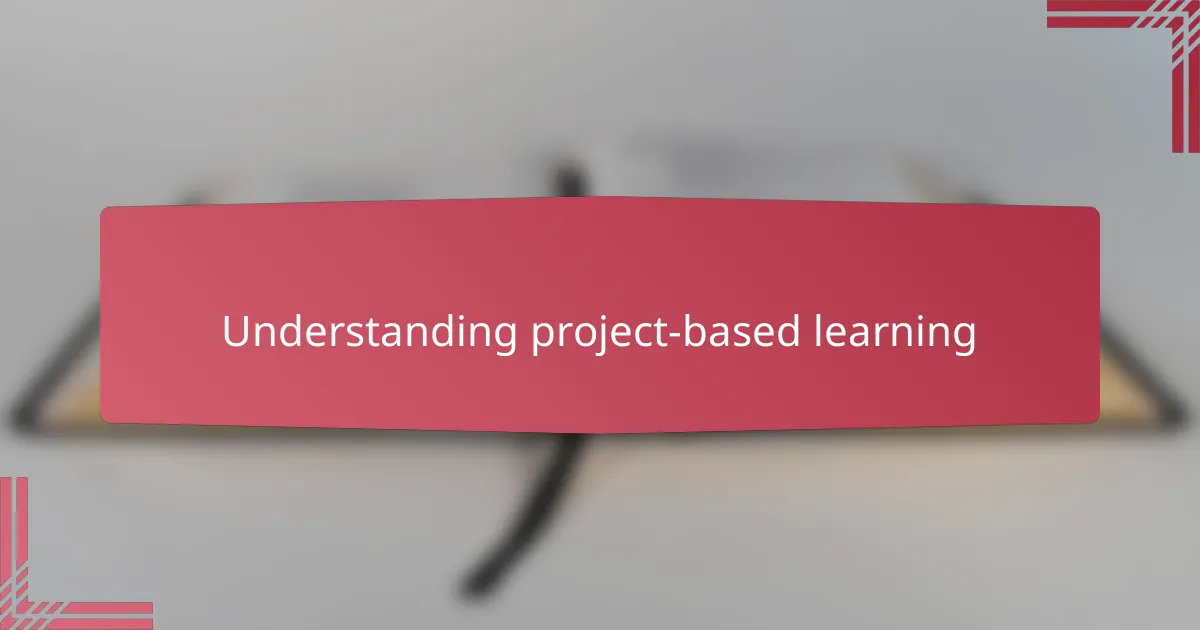
Understanding project-based learning
Project-based learning, in my experience, is more than just a teaching method; it’s an invitation for students to dive deeply into real-world problems. I’ve seen how this approach transforms classrooms from passive lecture halls into vibrant spaces where curiosity sparks and meaningful connections form. Have you ever noticed how students light up when they realize their work has a real purpose beyond the textbook?
What strikes me most about project-based learning is its emphasis on inquiry and collaboration. When I first tried it, I was amazed by how much richer the learning became—students weren’t just memorizing facts; they were asking questions, solving problems together, and expressing their own ideas. It feels like watching a community grow, where every member contributes their unique strengths.
Understanding project-based learning also means acknowledging the challenges it brings, like managing diverse needs and staying flexible. But isn’t that part of what makes it rewarding? For me, those moments when a student overcomes obstacles or takes ownership of their learning remind me why this approach is worth every effort.
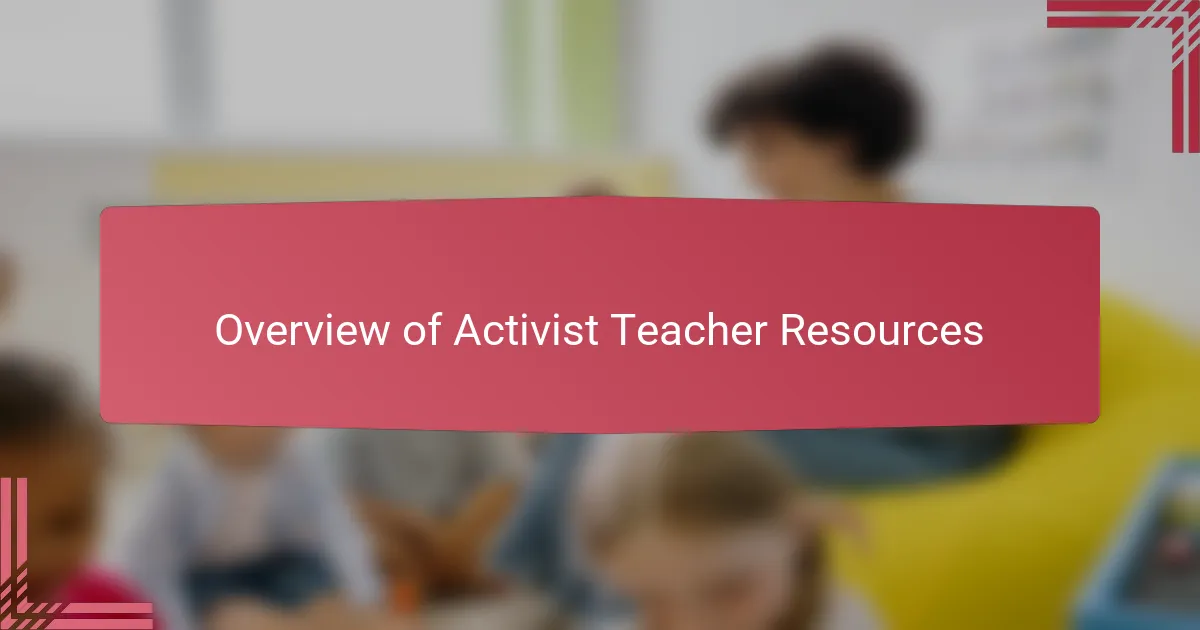
Overview of activist teacher resources
Activist teacher resources have been a game changer in my journey toward meaningful education. They go beyond lesson plans, providing tools and frameworks that inspire both teachers and students to connect learning with social justice. Have you ever felt stuck trying to make your lessons resonate with real-world issues? These resources were exactly what I needed.
What I appreciate most is how activist resources encourage us to be reflective practitioners. They challenge me to question not only what I teach but why and how I teach it. This ongoing self-examination has deepened my commitment and broadened the impact of my projects.
Navigating these resources can feel overwhelming at first, but their strength lies in community and adaptability. When I tapped into networks of like-minded educators, I realized I wasn’t alone in this work. That sense of solidarity gave me the confidence to innovate and persevere.
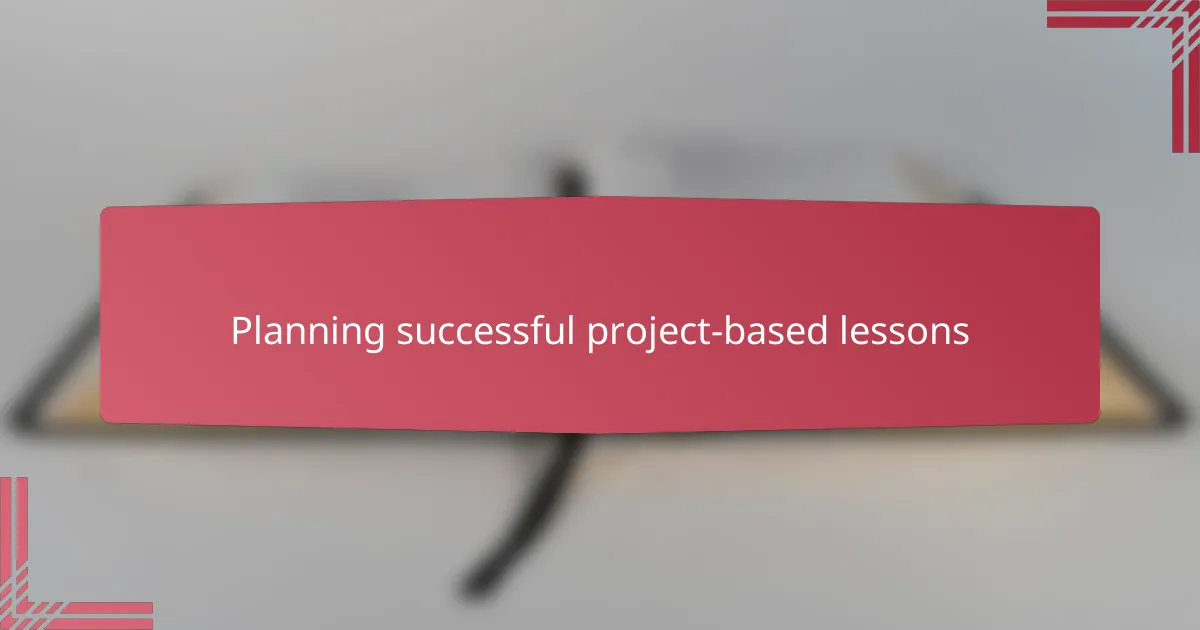
Planning successful project-based lessons
Planning successful project-based lessons starts with clear, student-centered goals. Early on, I found that setting achievable yet challenging outcomes helped guide both my students and me through the process without feeling lost. Have you ever tried to jump into a project without a clear destination? It quickly becomes frustrating for everyone involved.
I also make it a point to map out the project timeline carefully, but with plenty of room for flexibility. In one memorable project, I planned every step tightly, only to realize halfway through that students needed more time to explore the topic deeply. That experience taught me the value of staying adaptable while still maintaining momentum.
Another essential part of planning involves selecting materials and resources that resonate with students’ lives. I once incorporated local community issues into a project, and the students’ engagement skyrocketed—they were not just learning; they were becoming activists in their own right. How often do we give students projects that truly matter to them? This connection makes all the difference.
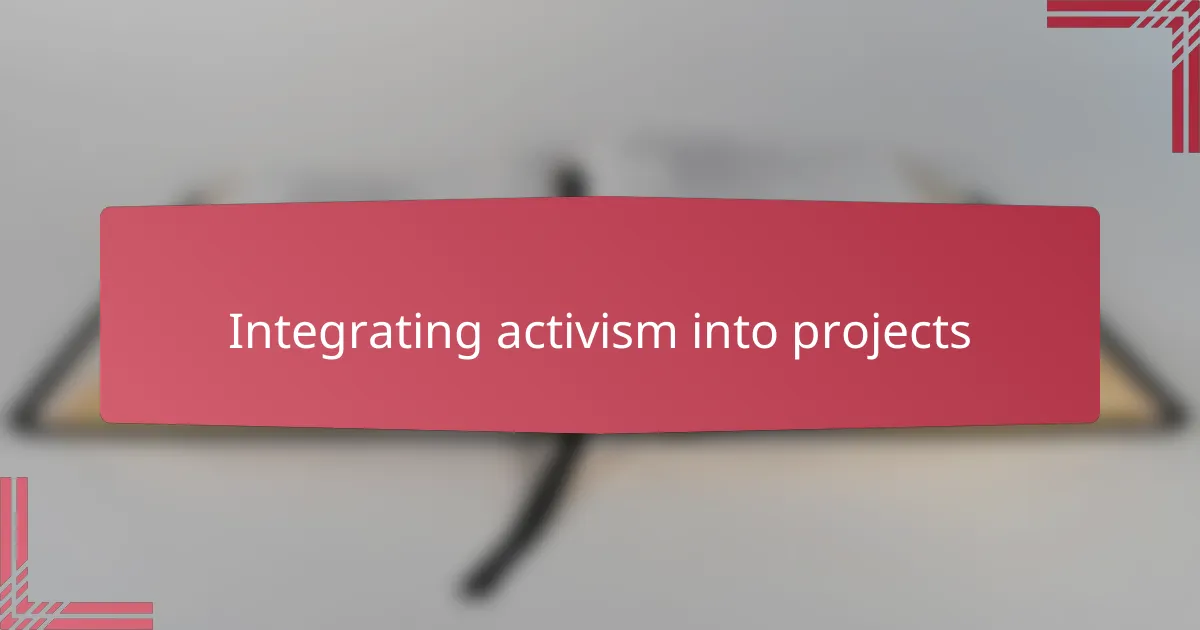
Integrating activism into projects
Integrating activism into projects means moving beyond abstract concepts to real, lived experiences. I recall a project where students researched local environmental injustices—they weren’t just gathering data; they were identifying issues that touched their own neighborhoods. That shift from observer to advocate energized the whole class in ways I hadn’t anticipated.
One thing I’ve learned is that activism flourishes when students see their voices as powerful tools for change. Have you noticed how a project becomes more meaningful when it asks, “What can we do about this?” Encouraging students to design actionable steps nurtures a sense of agency that textbooks alone rarely inspire.
But it’s not always easy. Balancing curriculum goals with activist intentions requires patience and trust in the process. I found that allowing projects to evolve organically—sometimes following unexpected student interests—creates space for authentic engagement. Isn’t that what real learning is all about?
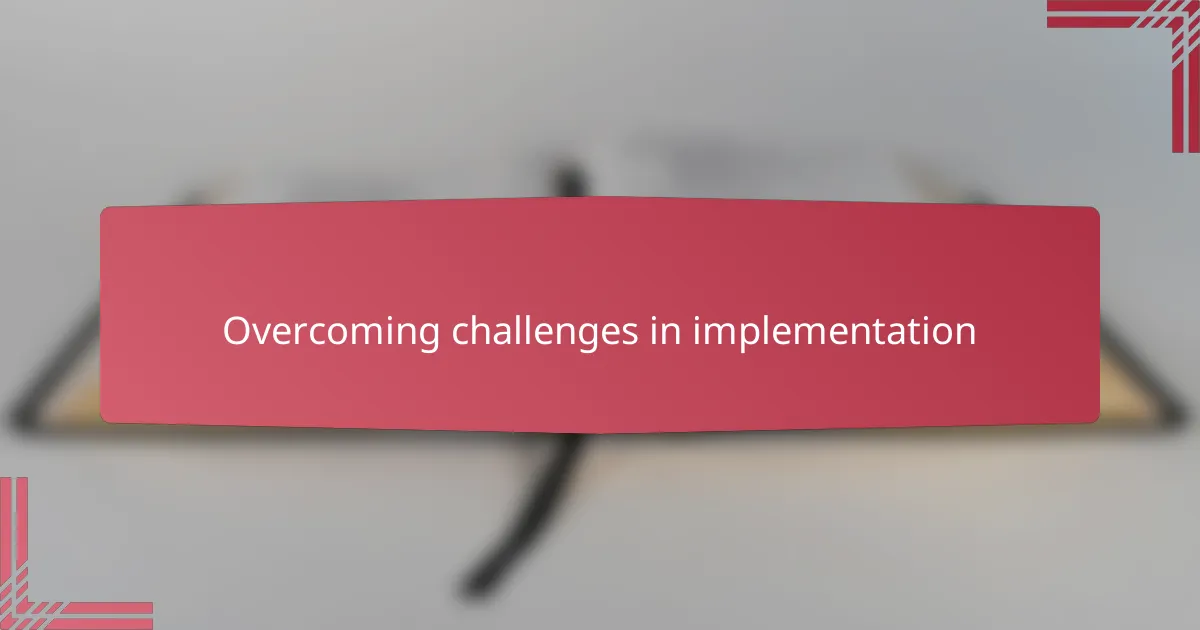
Overcoming challenges in implementation
Every new approach comes with its hurdles, and project-based learning was no exception for me. Early on, I struggled with time management—too many ideas, too little classroom time. Have you ever felt like the clock is your biggest adversary? What helped me was prioritizing key activities and being okay with letting some less critical tasks go.
Student resistance caught me off guard as well. Not everyone was ready to take charge of their learning or work collaboratively at first. I remember one student who openly questioned the value of the project, which challenged me to rethink how I introduced the concept. Framing projects around issues that mattered to them made all the difference in winning their buy-in.
Technology glitches and resource limitations also threatened to derail progress. Once, a planned virtual interview fell through due to a tech failure—frustrating, right? Instead of dropping the project, I encouraged students to pivot creatively, using their phones to record local experts nearby. That flexibility turned a setback into an unexpected opportunity for authentic learning.
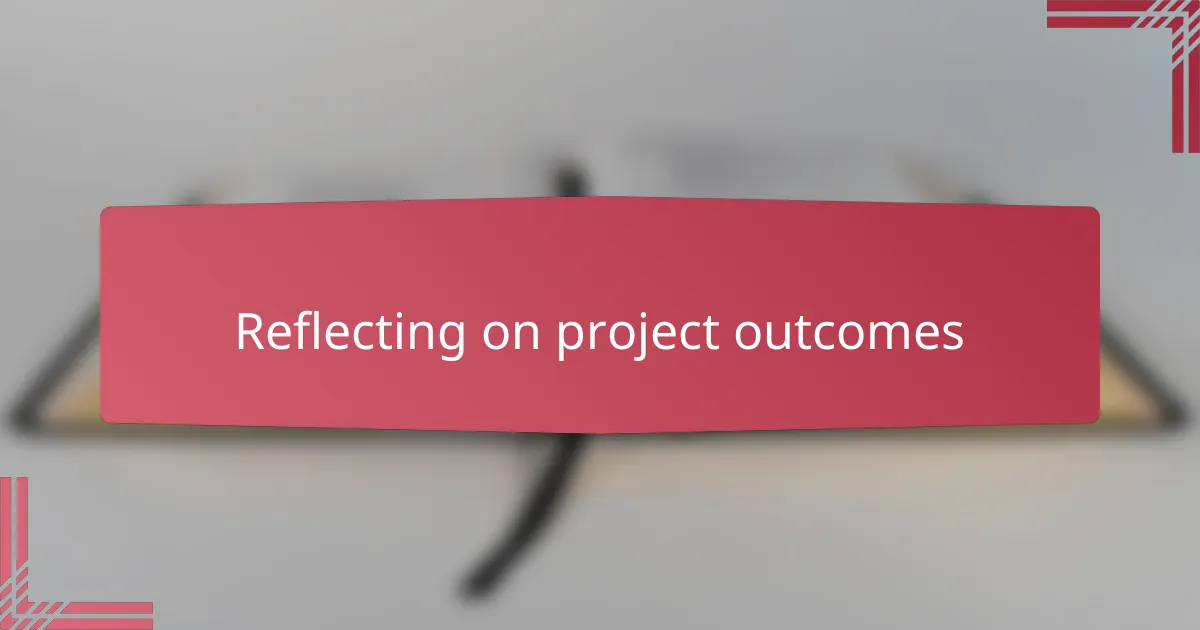
Reflecting on project outcomes
Looking back on the outcomes of my projects, I find reflection to be an invaluable step. Did the students genuinely grasp the concepts, or were they simply checking off tasks? By analyzing both the successes and the missed opportunities, I could adjust future projects to better support deeper learning and engagement.
One moment stands out vividly: after a community-oriented project wrapped up, students surprised me by sharing how their perspective on social issues had shifted. Witnessing that kind of personal growth affirmed for me that project-based learning isn’t just about content—it’s about transformation. Have you ever seen students evolve in ways you didn’t expect? That’s the kind of outcome worth reflecting on.
At times, I had to confront uncomfortable truths in my reflection—like recognizing that some voices remained unheard or that time constraints limited exploration. Rather than discouraging me, these realizations fueled my commitment to refining the approach. Isn’t honest reflection the first step toward meaningful change in teaching?
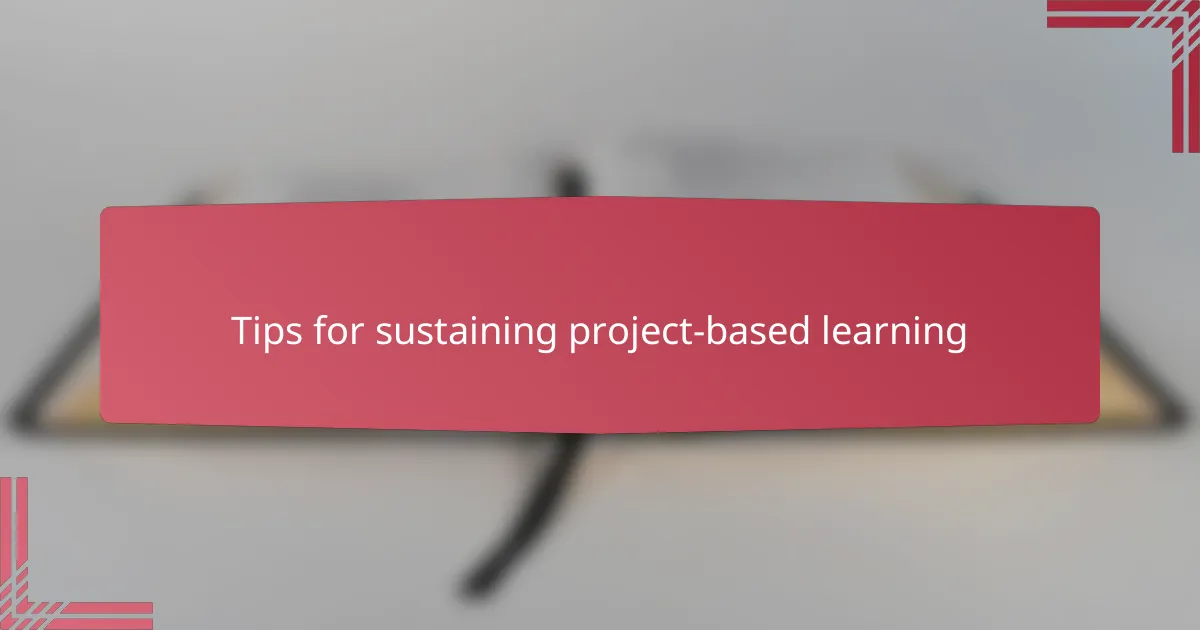
Tips for sustaining project-based learning
Sustaining project-based learning means nurturing momentum beyond that initial excitement. I found that regular check-ins—both with students and myself—help keep the projects alive and evolving. Have you noticed how a simple pause to share progress or challenges can reignite enthusiasm and deepen commitment?
Another key for me was building a classroom culture that embraces failure as part of learning. When students understand that setbacks aren’t dead ends but stepping stones, they’re more willing to take risks and persevere. It’s like creating a safety net that encourages curiosity without fear.
Finally, tapping into community connections proved invaluable. Bringing in guest speakers or local partners not only enriches projects but also reminds students that their work matters outside school walls. Have you ever seen your students’ eyes light up when they realize their learning can influence real change? That’s the spark worth sustaining.